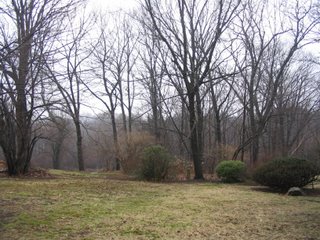Should barns be converted into homes?
There are barn purists out there who would argue that converting a barn into a house necessitates such significant alterations to the original barn that in effect is cease to be a barn at all. The sad truth is that MANY if not MOST barn house conversions DO result in a barn that looks a lot more like a house than a barn. The old structure has effectively ceased to exist. Instead, the owners end up with a big house with a very old (and expensive) frame...some of which they may catch a glimpse of here and there behind plaster walls, curtains, and those God-awful country-kitsch knick-knacks they hang on the walls! Sorry, apologies to those of you who have knick-knacks; I am showing my hand.
On the other side of the spectrum there are those who feel that the act of restoring an old building, regardless of the final result, is an act of preservation and therefore justified. It matters not if drywall and curtains would never have been found in any functioning barn, the barn has been saved and is serving a NEW function: instead of housing animals and storing up hay it now houses a family (actually, the similarities are kind of striking...)
I tend to lie somewhere in the center of these two poles, but tend to lean toward the conservative side, i.e. I am more of a purist when it comes to barns. Folks like Endersby and Greenwood of the New Jersey Barn Company, whose books I refer to in the "Barn House Bibliography" post, are even further to the right than I, although they DO convert barns into homes, so they are not ULTRA purists. I have spoken with both (and liked them very much!) and this is my impression of their position. Barns may be converted into homes, but extra special care should be taken not to alter the basic structure of the original building. Nor should the essential space be altered significantly. Chopping up interior spaces into rooms destroys the soaring volume of the original space and lessens the integrity of the building. Barn houses to be built in, for example, New Jersey should be constructed from New Jersey barns preferably. Ideally the conversion would take place without taking the building down and moving it, in other words the best case scenario is finding an old barn and restoring it in its original location. If a barn is to be moved, it should be erected in a rural setting, if possible in farm country. This, too, preserves the integrity of the structure. Care must also be taken to select materials that can be found on working barns. In this case, drywall just doesn't cut it. This is just my impression of their point of view. I want to state that I have great respect for it and in an ideal world I would love to build a barn house that is as pure as that. The realities (driven by budget) have made some compromises necessary. More for later...
Understanding the Possibility of a Sustainable City; An Interview with A-P
Hurd, Part 2
-
[image: Understanding the Possibility of a Sustainable City; An Interview
with A-P Hurd, Part 2]
BUILD talks with A-P Hurd about making the world a better...
1 year ago














